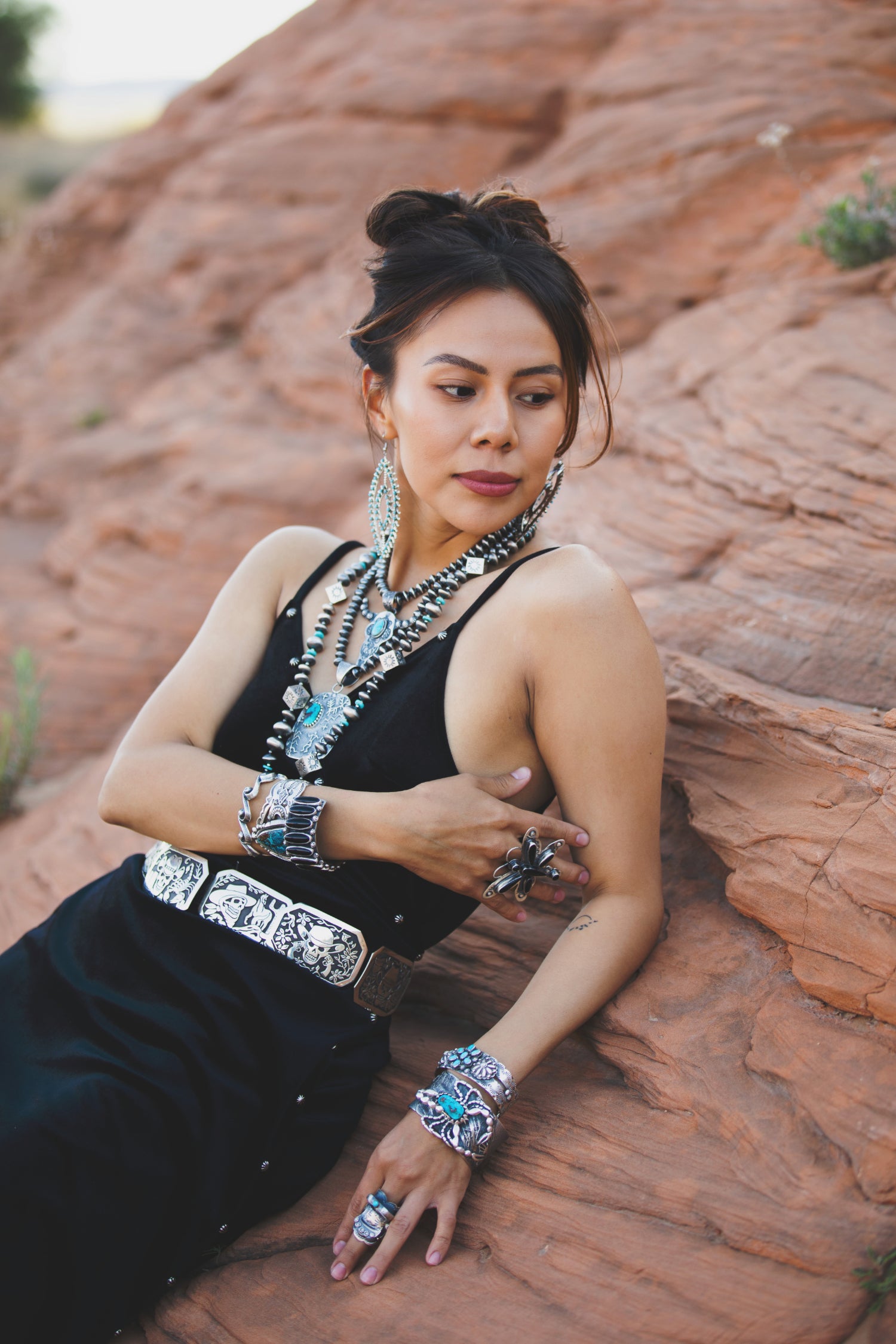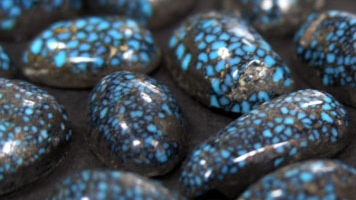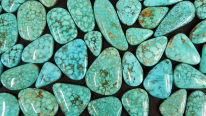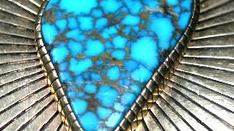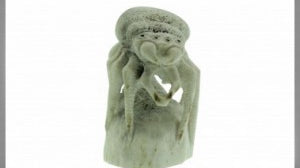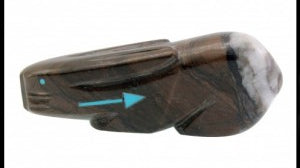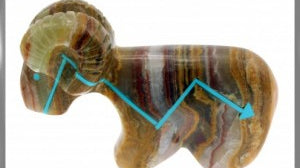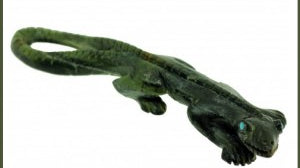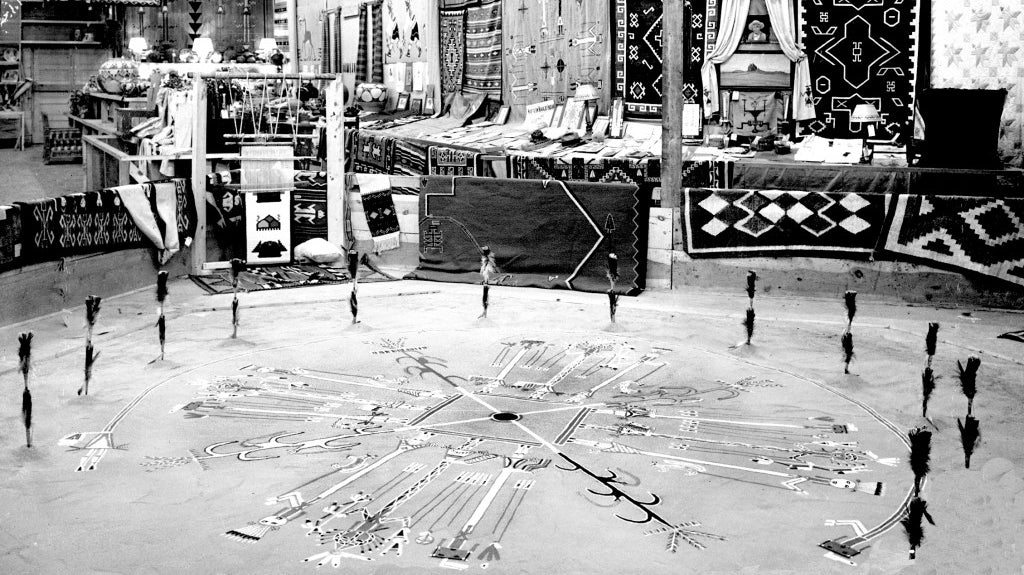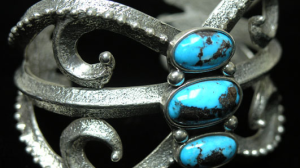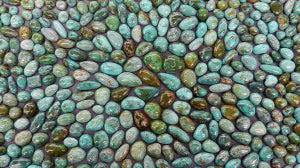Perry Null Trading
Lander Blue Turquoise
The Lander Blue turquoise mine in Lander County, Nevada is located between Battle Mountain and Tenabo. Found in 1973 it produced some of the most beautiful spider-webbed turquoise ever discovered. Today it is considered the most valuable turquoise known. Not surprisingly as early as 1975 it had been stated that Lander Blue “has become some of the most valued turquoise today.”
Kingman Turquoise
Kingman turquoise has been produced as a by-product from the copper mining in the Mineral Park Mining District located northwest of Kingman Arizona. The area lies in high-desert county at an elevation of 3,345 feet and is surrounded by three mountain ranges. The mining district around Kingman, Arizona has always been a large producer of turquoise, at one time the worlds largest. Although first mined by Indians, this area was home to the most extensive prehistoric workings found in Arizona, the modern production of turquoise dates back to the early 1880’s when James Haas rediscovered these ancient Kingman area mines.
Indian Mountain Turquoise
On the south range of Bald Mountain in Lander County, Nevada is the Indian Mountain turquoise mine. A Shoshone sheepherder was said to have found the mine in 1970. The Indian Mountain was owned and operated by Ed Mauzy and J.W. Edgar, both legends in Nevada turquoise mining. Mining at Indian Mountain was carried on from late May to early October with a recovery of "about three pounds" (Turquoise Annual) of good turquoise a day. During winter the mine could be covered in up to 10 feet of snow. Indian Mountain turquoise was difficult to mine, found in very compact rock. During mining season the miners lived in trailers 75 miles from electricity and the closest telephone. The vein material and small nuggets found were of a very high grade turquoise. Seen in both a green and fine blue color, sometimes combined. The spider web Indian Mountain is considered to be some of the finer turquoise available.
Hachita Turquoise
Hachita turquoise is from a group of mines near Old Hachita, Grant County, New Mexico. They include the Azure, Cameo, Galilee, and Aztec claims. The name "Hachita" comes from the Spanish term for "Little Hatchet". The small town itself was located in the foothills of the Little Hatchet Mountains in the Hachita Valley of New Mexico. The hachita turquoise deposits lie in a location known as Turquoise Mountain about 6 mile west of the town.
Spider Zuni Fetish Meaning
What is the Spider Zuni Fetish Meaning? Fetishes play an important role in Zuni culture. Whether you are a collector of fetishes, or wanting to simply understand the culture better, you may wonder what certain fetishes mean. In this case, let's discuss the Spider. Generally the Spider represents creativity and is considered the weaver of the fabric of life. It is not a traditional Zuni fetish but may have gained popularity through trade with other tribes and the demands of collectors.
Rabbit Zuni Fetish Meaning
If you collect Zuni fetishes, you may have a rabbit in your collection. Rabbits are not, however, traditional fetishes in Zuni culture. They have become popular through trade with other tribes and requests of collectors. In Zuni culture a fetish represents the animal spirit thought to reside in the stone. What is the Rabbit Zuni Fetish meaning? Because the rabbit is usually prey for other animals it may represents facing one's fears. Rabbits are also known for their abundant procreation and therefore can be associated with fertility and birthing.
Sheep Ram Zuni Fetish Meaning
If you have a collection of Zuni fetishes including sheep or a ram you may be curious what it means. What is the Sheep Ram Zuni Fetish Meaning? A sheep, mountain goat, big horned sheep or ram is used to increase the size of a herd. These also represent a sense of self-worth.
Serpentine - Zuni Fetish Carving Material
Serpentine is a beautiful group of about 20 related minerals, usually green, yellowish-green, or brownish-green in color. Its name is thought to be derived from its serpent-like green colors. Serpentine is sometimes also referred to as "Fish Rock". The material is usually translucent to opaque. It is a very common mineral, mined all over the world. Like many minerals used in Zuni carvings it is mined near the Zuni Reservation. In the Four Corners Area it is mined in Gila Co., Arizona, about 2 hours south of the Zuni Reservation.
The Navajo Dine Tribe
In 1640 the Spaniard Coronado, with a small army which included women and hundreds of Indian allies from Mexico, moved into what is now New Mexico, where today's Navajo Dine Tribe flourishes, looking for the Zunis and their fabled Seven Cities of Gold. Nobody seemed to notice that there were only six cities occupied by the Zunis, but they did notice that there was almost no gold to be seen. A Plains Indian living at Pecos talked Coronado into traveling even further north and east to find his treasure. That didn’t work out too well for either of them.
Pilot Mountain Turquoise
Pilot Mountain turquoise is made up of a group of mines at the southern end of the Pilot Mountains in Mineral County, Nevada a short distance outside of Tonopah. The two most well known mines being the Moqui-Aztec or S. Simmons and the Montezuma or Troy Springs mine. The Montezuma is still being worked two or three times a year and produces a hard thin veined turquoise, Pilot Mountain turquoise, with colors ranging from a bright blue to dark blue, along with a dark blue with a greenish cast. Light to dark brown limonite mottled patterns are associated with this material. William Miller of Tonopah discovered the Montezuma in 1905.
Persian Turquoise
Little needs to be said about Persian turquoise, as it was long considered the finest turquoise in the world. It has always been the gold standard of quality. The beautiful blue color of Persian turquoise and its rarity in today’s market makes this wonderful turquoise highly valued. Mines in the northern areas of Iran have been producing turquoise for many centuries. For over 800 years Persia (Iran) produced the bulk of the world’s turquoise using the simplest of hand tools made from stone then later with picks and crowbars. The oldest continuously operated mines known were operated in the Ali-Mursa-Kuh Mountains near Nishapur, Khorasan, Iran. They were known to have operated at least since 1000 AD and it is possible since 2100 BC.
Number Eight Turquoise
The Number eight turquoise mine is in the Lynn mining district in Eureka County, Nevada. The mine is considered depleted and has not produced turquoise for a number of years, although much is still available through collections and other holdings. Earl Buffington and Lawrence Springer filed the first formal claim on the property in 1929. Not long after that time the mine began going though a number of owners which included; Ted Johnson, Doc Wilson, Myron Clark, Lee Hand, the Edgar brother and Dowell Ward. All are important names in Nevada’s turquoise mining history. In 1950 the Edgars with a bulldozer began looking for copper. What they did uncover was a deposit of some of the finest spider web turquoise ever found in Nevada. The pocket produced more than 1,600 pounds of the very highest-grade turquoise, a discovery that is still being talked about today.

